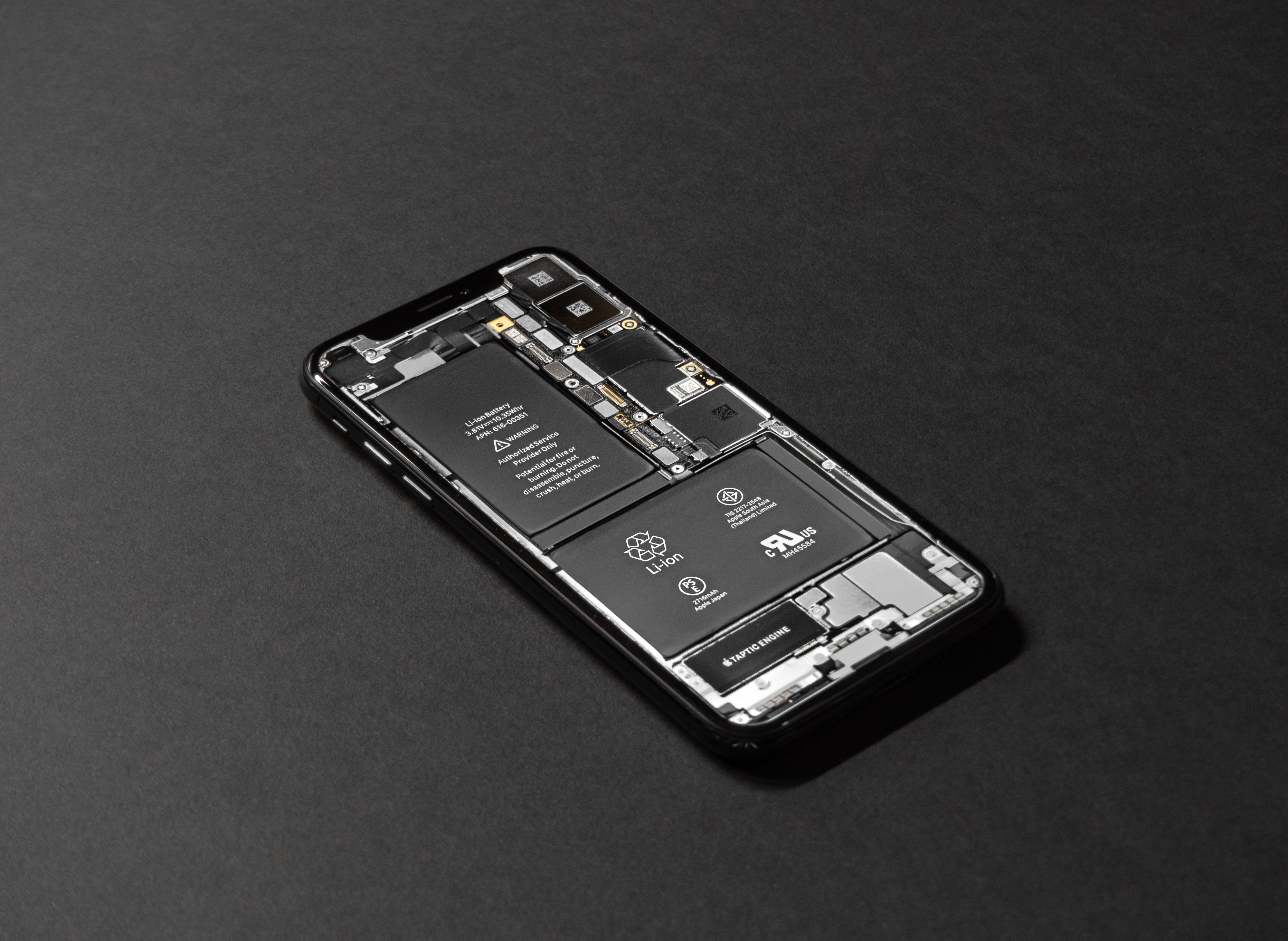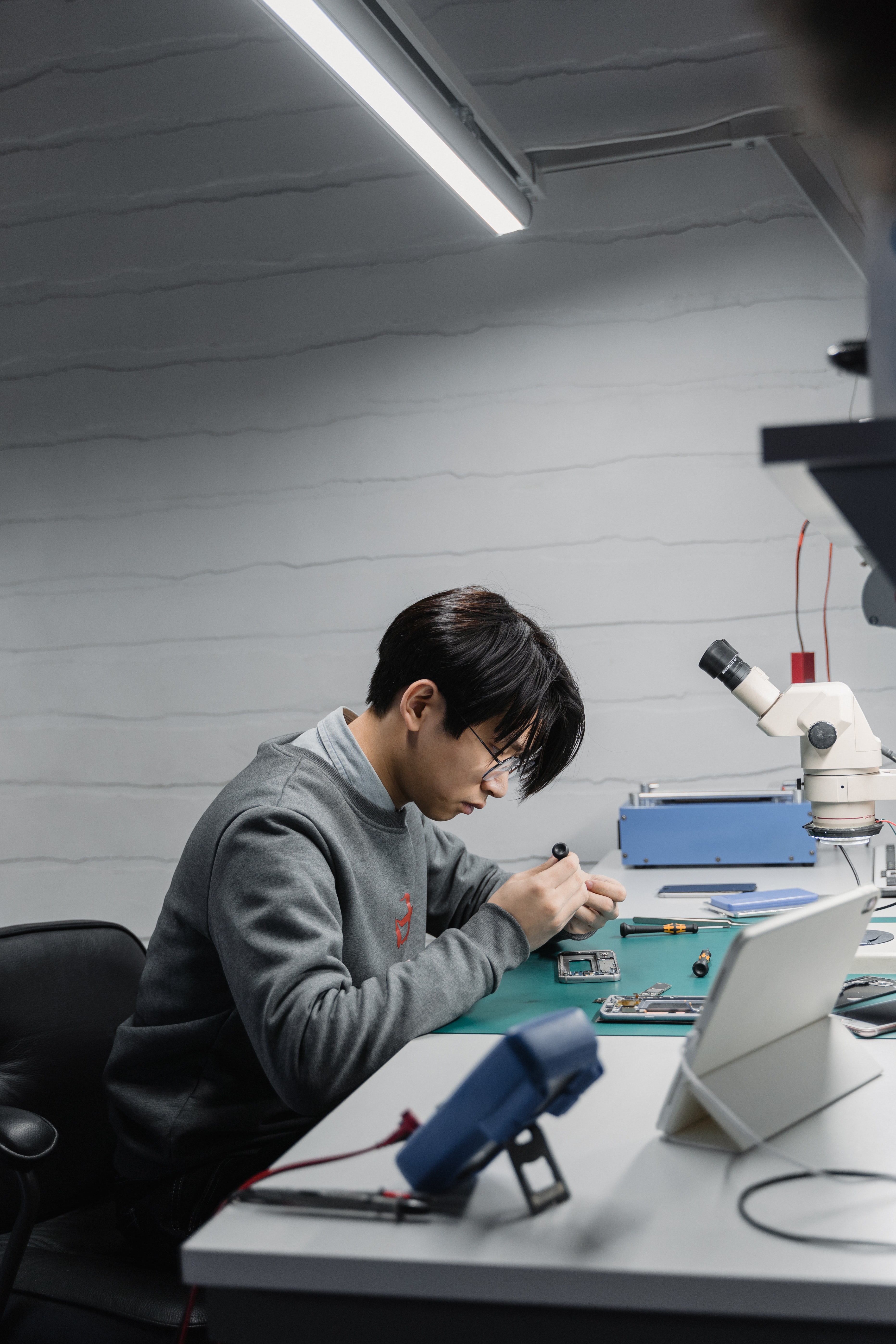How to Increase the Smartphone Refurbishing Business’s Value
By Nikhil Pachhandara, OptoFidelity Oy
For consumers, buying a refurbished smartphone is a no-brainer — saving both money and the environment attracts more and more people. However, despite rapidly growing global demand, successfully running a smartphone refurbishing business is everything but straightforward. First, let’s take a look into the global market, and then explore how you can change the game by harnessing the power of automation.
Enter the circular economy
To begin with, why is smartphone refurbishing so important and what has the circular economy got to do with it? The traditional linear economy is going in a hazardous direction, as we use natural resources to make more products and then throw the products away. Thus, we must turn the linear into circular by stopping waste production entirely. By definition, a circular economy is a model of production and consumption which involves sharing, leasing, reusing, repairing, refurbishing, and recycling existing materials and products for as long as possible.
Ca 5.3 billion smartphones will be thrown away in 2022. Stacked flat atop one another, these phones would rise roughly 50,000 km, 120 times higher than the International Space Station, and one-eighth of the way to the Moon! All these valuable materials and recyclable components will disappear into drawers or tossed into waste bins bound for landfills or incineration, says The WEEE Forum. On a positive note, this is where your biggest business potential also is.
What exactly is smartphone refurbishing business today
A smartphone refurbishing business can be refurbishing and repair operations or buying and selling used phones. The operators in the current market — refurbishment and repair centers, online sellers, e-marketplaces, teleoperators, logistics and insurance companies — all serve consumers and each other, forming more and more complex business ecosystems. Also, the smartphone manufacturers are now heavily involved, with the most environmentally aware brands being Apple and Samsung. In fact, these manufacturers want to see their old phones refurbished and recycled, which is why they invest in recycling and offer their own certified renewed smartphones.
Heading to global growth
The smartphone refurbishing business is already one of the largest segments in the smartphone industry and is estimated to almost double its value to 459.86 million units by 2027. In fact, it’s expected to reach a value of around USD 146.43 billion by 2030, at a compound annual growth rate of about 11.45% during the 2022–2030 forecast period.
In fact, just a few years ago, no one thought the refurbished smartphones market could grow as large as it already has. In developed countries, advanced and high-tech smartphones have become a solid part of consumers’ lives. But due to the devices’ short life cycle and rapidly improving technology, the general interest has shifted to the second-hand markets. Also, consumers are getting more educated and responsible and want to make sustainable choices as they spend ever more time on their smartphones. Concurrently, the consequences of the pandemic — production shutdowns, unstable logistics and supply chains, and border closures — have accelerated the transition towards using refurbished phones, not to mention the economic downturn that makes consumers more cost-conscious.
In addition, major refurbishment business or sales of such phones is happening in developed countries. According to a GSMA study, in a growing number of markets, most adults now own a mobile phone, meaning that future growth will come from younger populations taking out a mobile subscription for the first time. Over the period to 2025, there will be an additional 400 million new mobile subscribers, most of them from Asia Pacific and Sub-Saharan Africa, taking the total number of subscribers to 5.7 billion (70% of the global population). Concurrently, 5G’s footprint continues to expand, with live services now available in 70 countries around the world. By 2025, there will be nearly 7.5 billion smartphone connections, accounting for over four in five all mobile connections. As a result, mobile data will more than triple in most regions over the next six years, driven by increasing smartphone adoption and video usage.
It’s important to note that mobile technology will play a central role in efforts from improving access to education and healthcare to addressing issues with poverty and inequality. Globally speaking, mobile technologies will play a key role in governments’ recovery strategies and present a significant opportunity to foster inclusive and resilient growth through appropriate policy and regulatory environments for mobile services, in order to accelerate investment and innovation, the study says.
So, the smartphone refurbishing operators are all keen to reach new markets for a good reason — the business is sustainable, and its basic logic is simple, right? For the latter, not quite. At least not without proper technology.
Confronting the challenges
Two metrics of success also apply to the refurbished smartphone market: how profitable your business is and how satisfied the customers are. As the margin percentages are small and the competition is fiercer than ever, you’ll need large volumes and fluent operational processes. If the consumers don’t get what they are promised, are confused by pricing, or have to wait longer than expected, they’ll get disappointed, and your brand value will soon be lost. It’s just like when buying a used car — who do you trust and why? Thus, there are several factors that you should consider in both your short- and long-term strategy.

Relying on logistics in the long run is not an option. You’ll need local refurbishing staff that can serve customers efficiently. You have to hire them, train them, and make sure the work gets done well. In smartphone refurbishing, the staff often has short-term careers, meaning you’ll need to do all this again and again, not to mention the hassle of scaling the operations to promising new markets or according to rapidly changing situations. And no matter how well the staff does its job, there is always room for human error, and over seven or eight hours, the efficiency and quality of manual work tends to decrease. At the same time, new technologies and smartphone models appear all the time, complicating the market further.
Now, what is your next move?
Competitivity through automation
The answer is automating the condition analysis for repair and valuation of a device. Analysis is indeed the most critical phase of the refurbishing process, and automation speeds it up by approximately 90%. Also, by using automated analysis, training the staff for the analysis and device valuation is no longer complex or time-consuming — new workers are now ready to start their tasks within a day. It doesn’t require any further technical skills either, and the right things get fixed right away. Automation beats manual inspection in both accuracy and reliability on all terms, any time. What follows is even better.
Objectivity is the key to customer trust and loyalty in the refurbishment business. Thanks to the automated device condition analysis, you are able to show reliable results instead of human estimates. Visible and accurate device condition data is also just as important when ordering new items for sale — for example, with automated analysis, you can safely buy 10,000 used phones for reselling, analyze them effectively and rightfully send back the amount that isn’t the quality you expected.
As your device condition analysis process becomes standardized, both valuating and refurbishing a smartphone becomes remarkably easier. You instantly know what the device is worth or what needs to be fixed before it can be sold, and in what condition it is most profitable in. Concurrently, it’s also easy to create, for example, price ranges to different defaults, just as Amazon does. It’s also possible to automatically identify whether the device has an OEM for aftermarket parts, affecting the devices’ insurance, performance, and reliability, and thus the price tag. In addition, you can stand out from your competitors by adding a “robot tested seal of quality” for the smartphones that you sell or refurbish.
What to look for in automated device condition and grading technology
For these reasons — efficiency, scalability, value, customer satisfaction, and competitiveness — investing in automated device condition technology is crucial for any operator in the industry. A refurbished phone may have lost its value for its manufacturer, but there are whole new business possibilities, models and ecosystems waiting in the second-hand market. With modern, automated device condition analysis, you can be sure that you are heading in the right direction.
Proper automated functional testing provides an efficient test cycle with reliable and repeatable test results for high-volume testing of smartphone devices. These modern analysis systems provide extensive test capabilities and highly efficient test cycle time with minimal handling, can be used manually, or integrated into fully automated test lines with various types of feeder mechanisms. The benefits of such functional testing technology include universal jig, zero downtime on smartphone model changes, easy configuration of new models, configurable test parameters, support of both manual and automatic handling, minimal factory floor footprint, as well as fast cycle times and short handling times, and comprehensive result data generation.
For functional testing, you’ll also need a fully universal phone adaptation, meaning you don’t need additional hardware to support new phone models. This substantially lowers the total cost of ownership in a high model mix, such as in refurbished phone processing. Also, introducing a new device for the analysis system is no longer rocket science, but done in an intuitive and easy-to-use graphical user interface. The correct device type can be identified with a QR code on a device display, applying a specified test procedure for each make and model.
For grading the secondhand smartphones by their cosmetic defects, display quality, and functionality, you’ll need an automated test system, too. The system enables objective verification of smartphone functionality that would otherwise require subjective human analysis. These modern grading technologies can be used either manually or as an integrated solution within a fully automated processing line with various types of DUT feeder robotics, offering objectively qualified features and configurable evaluation criteria. As one jig fits all, there are no phone model specific hardware costs or downtime on phone model changes. Also, make sure the automated grading system complies with CTIA Wireless Device Grading Scales Criteria and Definitions.
At OptoFidelity, we are ready to help. We’ve been serving the smartphone refurbishment segment since 2017, bringing trusted value to returned and used smartphones on a global scale.

 Nikhil Pachhandara
Nikhil PachhandaraNikhil Pachhandara is Chief Innovation and Growth Officer at OptoFidelity. He is passionate about bringing customer-centric products, solutions and innovations to the market. Nikhil holds PhD in Machine Learning from Tampere University of Technology, Finland. He is an Executive MBA from Kellogg School of Management at Northwestern University, USA and WHU-Otto Beisheim School of Management, Germany.